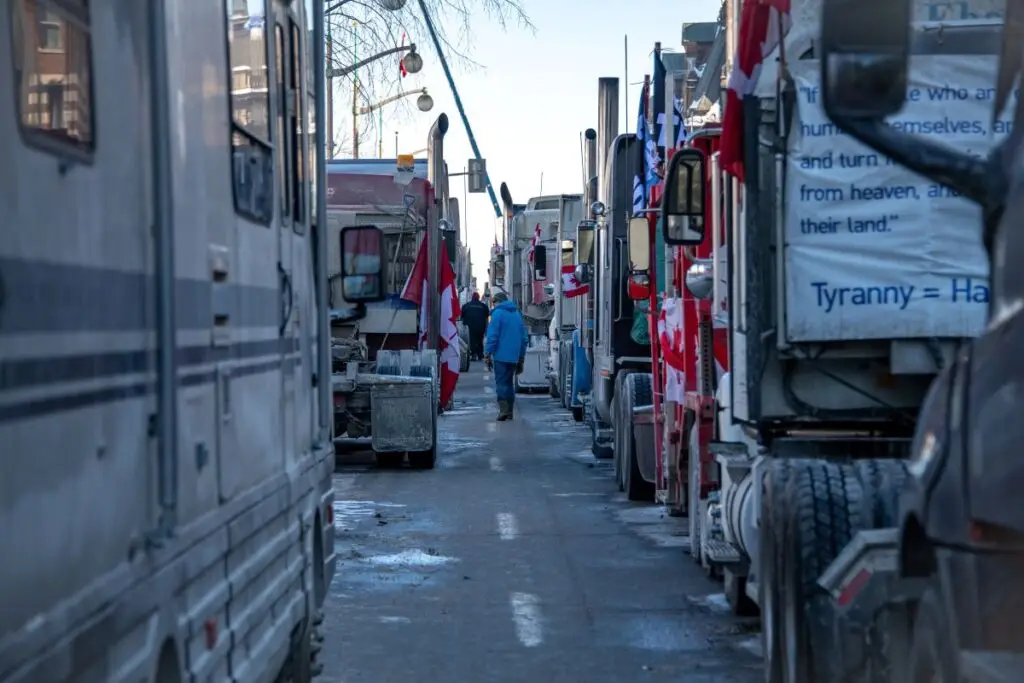The Freedom Convoy, the protests, the border
blockades—how one of Canada’s biggest stories of the year catapulted the towing
industry into the spotlight.
by Kara Cunningham
The convoy movement that swept across Canada earlier this year interrupted life and business and raised interesting questions about the relationship between personal liberty and public responsibility. As the ensuing protests and blockades were declared illegal, and the Emergencies Act was introduced, the towing industry found itself in the uncomfortable glare of a no-win situation. And for once, the industry mostly agreed on what to do.
An unprecedented event
The “Freedom Convoy” was initially created to protest a mandate that required Canadian cross-border truckers to vaccinate against Covid-19. Beginning January 22, 2022, hundreds of vehicles joined together to form a cross-Canada convoy before converging on Ottawa on January 29 for a multi-day demonstration on Parliament Hill. This movement inspired other protests in other communities and capitals, as well as at border crossings.
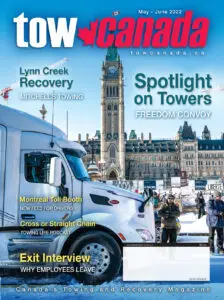
Originally published in
Tow Canada, May-June 2022
On the same date that the convoy arrived in Ottawa, a group of truckers blockaded the Sweetgrass–Coutts Border Crossing, a major transportation artery which connects Sweet Grass, Montana, with the village of Coutts, Alberta. It is one of the busiest ports of entry west of the Great Lakes, and it is a primary conduit for cross-border trade, estimated at sixteen billion Canadian dollars a year, or roughly 44 million every day.1
A little over a week later, protesters also blockaded another critical artery, the border crossing at the Ambassador Bridge, which connects Windsor, Ontario, with Detroit, Michigan. It is estimated that the bridge carries 60 to 70 percent of commercial truck traffic in the region, and an average of $13 million (US) in goods is shipped across the bridge per hour.2
As the protests ground communities and borders to a halt, frustration mounted. Protesters expressed anger and concern over what they perceived as government overreach, and while organizers were committed to peaceful protest, the demonstrations attracted elements contrary to the original goals and intent of the movement. The disruption left many locals feeling harassed and under siege, while businesses worried about the economic consequences. Meanwhile, authorities scrambled to manage this unprecedented situation.
An uncomfortable spotlight
In an effort to end the disruption, on February 11, Ontario Premier Doug Ford declared a state of emergency: “We are now two weeks into the siege of the City of Ottawa. I call it a siege because that is what it is. It’s an illegal occupation,” Ford said.3
To deal with it, Ford said he would “’use legal authorities to urgently enact orders’ that would protect border crossings, the 400-series highways, airports, bridges, ports, and railways in the province.”4
"Can you imagine receiving hundreds of threatening emails and phone calls from persons wishing you and your employees ill will before you even get the call to respond?”
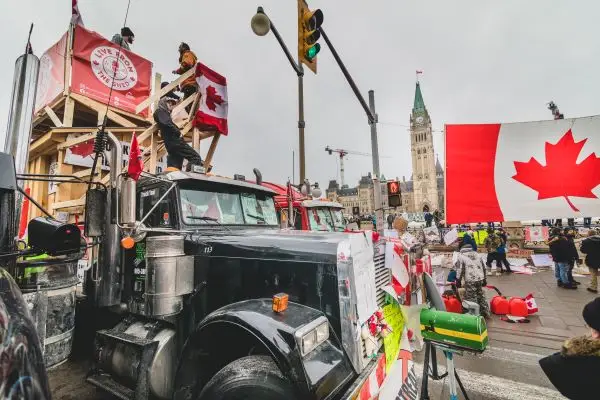
Following that, on February 14, Prime Minister Justin Trudeau invoked the Emergencies Act for the first time in Canadian history. He stated: “Occupying streets, harassing people, breaking the law: this is not a peaceful protest. At the borders in different places in the country, the blockades are harming our economy and endangering public safety. Critical supply chains have been disrupted. This is hurting workers who rely on these jobs to feed their families.”5
According to the act, “When necessary for dealing with a public order emergency, the federal government can issue or adopt temporary orders and regulations,” which include: “Directing persons to render essential services to relieve impacts of blockades on Canada’s economy, including tow trucks and their drivers, who will be compensated.”6
Of all the measures that would be invoked to handle the protests, this measure in particular put a new and uncomfortable spotlight on the towing industry. Conceivably, the act could be used to compel companies to provide essential services: “related to removal, towing, and storage of any vehicle,” with the risk of having one’s tow trucks seized and used by the police.7
One thing was certain, once the act passed, authorities would be calling on tow companies to remove vehicles from protest sites.
A no-win situation
One thing that the authorities quickly learned was that, regardless of their politics, towers were reluctant to participate. Any use of the Emergencies Act to force operators to clear protest sites or blockades would be met with resistance. In fact, industry consensus on this issue was near unanimous, which is almost unheard of in the industry.
As the media spotlight trained its glare on the industry, the industry quickly realized that it was in a no-win situation. It didn’t matter whether you supported the protests or not, you and your company were going to get slammed from all sides. The assault began as many tow companies were simply becoming aware of the situation themselves, and their responsibilities.
“Can you imagine receiving hundreds of threatening emails and phone calls from persons wishing you and your employees ill will before you even get the call to respond?” said Joey Gagne in an interview with Tow Canada. Gagne is president of Abrams Towing Services (a 200-truck operation based in Southern Ontario), and a Canadian Towing Association board member.
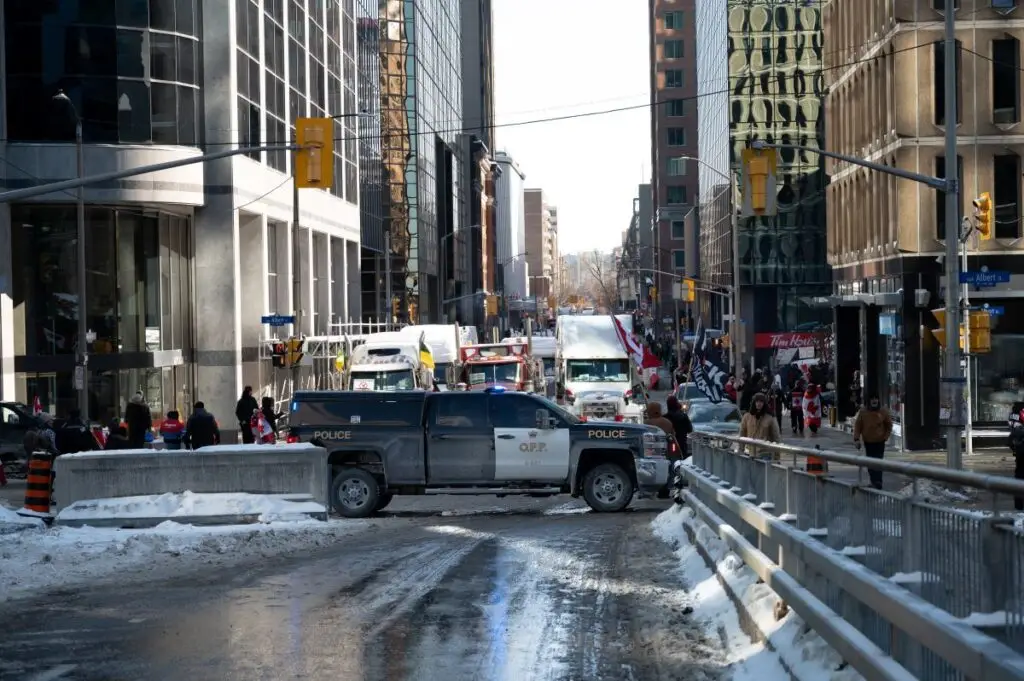
“We all experienced significant harassment from the public about whether or not we were going to go,” said Gagne. “Some demanded to know why we weren’t removing those trucks. And then there was the avalanche of people jamming our email and websites and phones telling us that we’d better not go, or they would hurt our business. Lots of companies experienced this, and many of these companies were independent and neutral but were still harassed.”
In an interview with TVO Today, president of the Provincial Towing Association of Ontario (PTAO), Mark Graves related something similar: “We’re getting emails and letters from citizens, from truckers, from various different groups that are either saying, ‘Hey, you know what? You’re doing the right thing by being neutral,’ or ‘Get your trucks in there and fix this problem.’”8
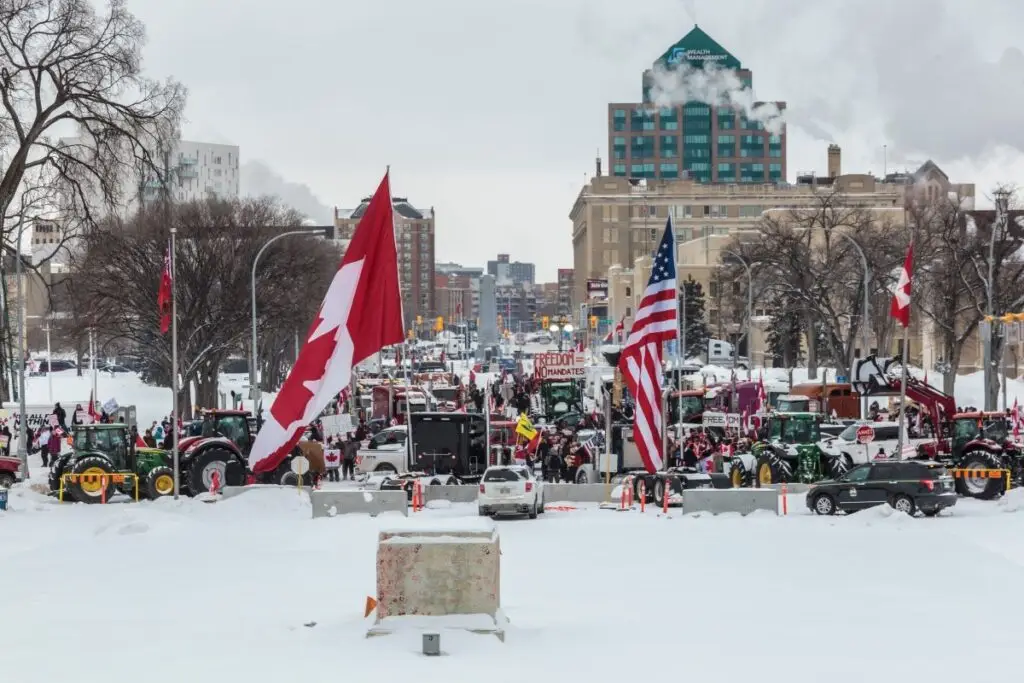
In the end, it did not matter what side you were on, if you had a tow company in the area, you were going to get harassed. As Gagne said to the Globe and Mail at the time: “Everybody’s pretty much on the same page about not wanting to do it. Because they think that there’s going to be damage, either to their business or equipment or people.”9
“I don’t make excuses,” said Gagne, “I won’t risk the health and welfare of my staff.”
According to Doug Nelson, executive director of the Ontario Recovery Group (ORG), his office was contacted by numerous members about calls they were receiving from law enforcement. Members were very concerned about the health and welfare of their drivers. After lengthy consultation, it was decided to send a message to the members. The following is an excerpt:
I wish to advise all members, if you get involved in this issue, and before you decide to tow any of the subject trucks, to consult with your health and safety personal, and you should consider all of the potential consequences.
The demonstrators’ tempers are high, and I would suspect very dangerous to the health and welfare of your drivers and equipment. Further to this, it will likely take hours to do a proper hookup due to the interference and abuse your drivers will likely face.
Ask yourself, how many drivers will you lose due to the stress or physical abuse they will be under? You can compound this for each truck you try to tow. Add that to the number of trucks to be towed, and it is easy to determine it will be a losing battle, as likely there will be additional trucks to take the place of each one towed.10
The PTAO advised its members to refrain as well. In the Globe and Mail, Graves stated: “It would be business suicide. These are the trucking companies that call you for work when they break down on the side of the road. You think… [are] they ever going to call you again? You may as well just write your own ticket to shut your business down.”11
Across the country industry associations raised similar concerns. In an interview with Global News, Don Getschel, president of the Towing and Recovery Association of Alberta, also highlighted the risks. Some companies even received death threats.
“I can confirm that three of our members had received threatening phone calls and emails,” said Getschel.12
“People were threatening to burn their equipment down or burn their facility, so there [were] threats of arson.”13
A plea for neutrality
In his interview, Getschel emphasized the need for towing companies to make their own choice with regard to involvement: “It’s generally up to individual towing operators and companies to decide whether to help police dismantle blockades, because the ‘industry has tried to remain neutral through all of this’ and has ‘stakes on both sides. It’s hard for me to watch. We’re part of the trucking industry as well as we work directly daily with law enforcement.’”14
Many company owners felt that participation should remain an individual choice.”
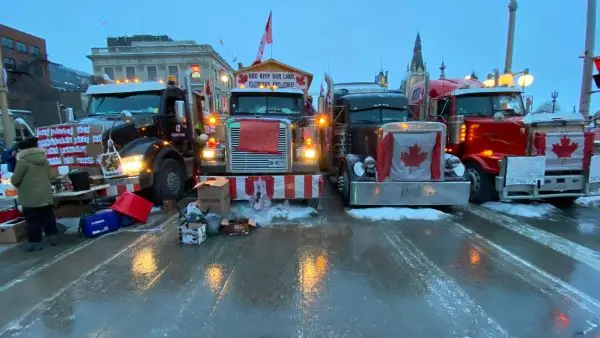
Getschel related the complexities of the job and the complications of having loyalties and responsibilities on all sides. For the most part, towers across Canada wanted to remain neutral.
In Quebec, Réjean Breton, CEO of the Association of Repair Professionals of Quebec (APDQ), which represents 84 percent of the province’s tow truck fleet, said, “’We recommend that tow truck companies not do that. Our job is to tow a truck in technical difficulty, for example due to a breakdown or a collision. Our mandate is not to tow a truck, which is a political difficulty. Companies that towed heavy vehicles that blocked roads in Quebec have suffered ‘retaliations’ in the past.”15
A rational reluctance
There were other issues that fed into towers’ reluctance to become involved, a number of which probably never occurred to the public.
“Under a government mandate, we don’t know how it affects the Ministry of Labour laws and [Occupational Safety and Health Administration] rules for safe working environments for the employees,” said Graves in a CBC Radio interview. “We don’t know what type of protections are going to be put in place. [The federal government] even went as far as saying they may just take the tow trucks. Well, what about insurance? What about damages?”16
Nelson added to this list: “To my knowledge, no consideration of driver security was mentioned, no offer to cover any workers compensation was tabled, no life insurance policies, no compensation for any damage to the tow trucks was offered, no protection of the towing company’s impound or premises, no bullet proof vests or helmets were offered. Not good working conditions for anyone to be working in.”
The dangers of intervention were real. For example, at the blockade in Coutts, “RCMP found a cache of 13 long guns, handguns, body armour, large amounts of ammunition and high-capacity magazines in three trailers,” and a “willingness to use force against the police if attempts were made to disrupt the blockade.”17 Not all protesters were committed to peaceful protest.
Other tow operators were simply wrapped up in their usual business and didn’t have the capacity or equipment to respond.
“There were storms in Toronto at the time,” said Gagne, “The last thing we were thinking about was going to Ottawa.”
Towing is, after all, a private industry. It is not recognized by authorities as essential in the same way the police, fire, or ambulances services are considered essential. And many company owners felt that participation should remain an individual choice.
“It is a free country,” said Gagne. “Whether I support the protest or don’t is irrelevant. We are not an essential service until it is convenient for the government to recognize it. I choose to do the business I choose to do, and nobody should be able to tell me I have to do it.”
“Some towers probably wanted to go [to the protest],” Gagne continued, “but it was bad business for most, whatever side you were on. In Ottawa, one small operator, a protest supporter, was called by protestor organizers to move a mobile kitchen from one site to another, and he was harassed terribly.”
The incident was reported by the CBC: “An Ottawa tow truck operator says he has received hundreds of calls, including death threats, from protest supporters who mistakenly believe he removed a plywood shack from Confederation Park at the request of police, when he was actually helping protesters.”18
A Regina towing company hit the news for similar reasons—just trying to do its job amidst a “Freedom Rally” after it received a phone call from the police to remove a vehicle.
“We didn’t go down there starting anything, we went down there to do a job,” explained a spokesperson to 650 CKOM (Saskatoon).19 She did not want to be named out of fear of reprisal.
“They have been calling nonstop threatening to shoot us, to surround us, to shoot us between the eyes. It’s way out of control with this protest,” she said. “They need to stop and realize it was one vehicle that was impounded.” The protesters have also taken to social media—posting negative reviews and comments about the company.”20
To Gagne, all these stories are an indication of why people did not want to get involved, “It did not matter if you were doing the right thing or the wrong thing, you were going to get grief.”
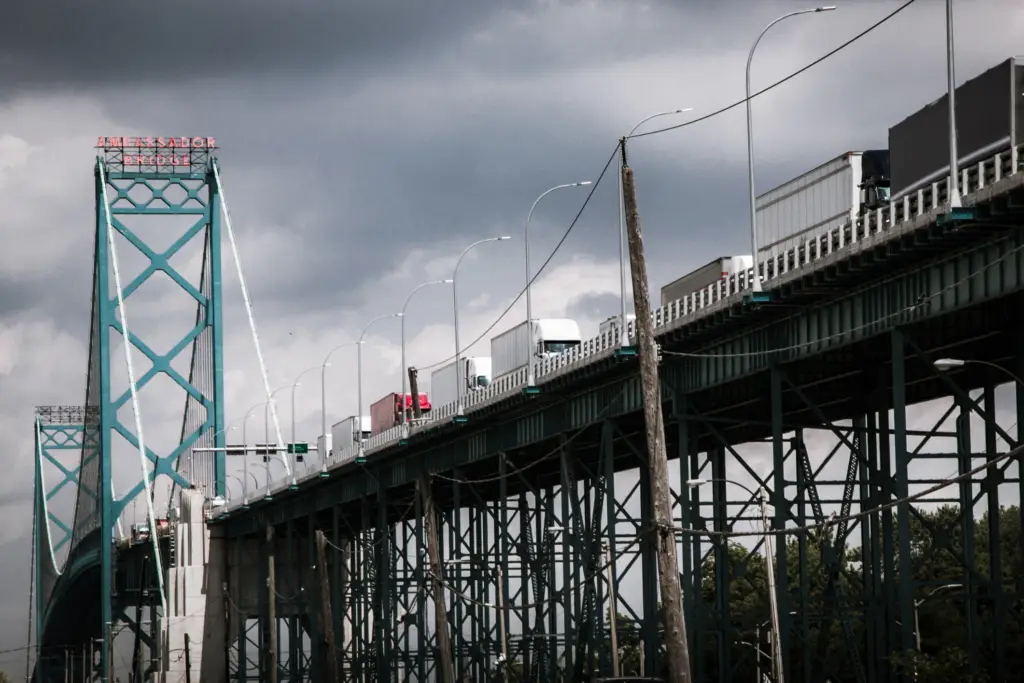
Very
rarely, if ever, have we seen the towing industry stand together and say, ‘You
know, we're not getting involved.’ But there's a reason.”
Graves concurred in another radio interview, “It’s serious enough that virtually every company for the first time, towing-wise, [are] all on the same page. You know, very rarely, if ever, have we ever seen the towing industry stand together and say, ‘You know, we’re not getting involved.’ But there’s a reason.”21
Clearing the protest sites
Between February 17 and 20, the police in Ottawa finally arrested organizers and protesters, removed parked vehicles, and dismantled blockades in the capital. The one tow company involved clearly did not want to be identified:
“Tow truck operators—wearing neon-green ski masks, with their companies’ decals taped over on their trucks to conceal their identities—arrived under police escort and started removing the hundreds of big rigs, campers and other vehicles parked shoulder-to-shoulder near Parliament.”22
In the end, no towing company was compelled to remove vehicles under the Emergencies Act, which was ended on February 23, amid controversy and criticism.
According to the Ottawa Citizen (as of February 21), “more than 70 vehicles have been seized and towed from the protest area, including 36 passenger vehicles, 12 from Ontario and 24 from out of province.”23
The Ambassador Bridge reopened on February 13, and the Coutts border crossing was reopened on February 15.
And about the company that finally helped authorities clear the red zone in Ottawa and the Ambassador Bridge: Gagne expressed nonjudgement. “They probably did it for economic reasons. I understand, but I was not going to risk my business for the grief this was going to cost. The company didn’t do anything illegal, they just did a job that they were hired to do. It is not my place to judge. I focus on what my customers ask me to do.”
Going forward
In light of the circumstances that gave rise to the protests and blockades, it only makes sense that authorities consider future scenarios and the rules going forward. In response, the Government of Ontario has introduced the Keeping Ontario Open for Business Act, 2022:
The proposed legislation would make it illegal to obstruct certain transportation infrastructure if the blockage disrupts economic activity or interferes with the safety, health or well-being of members of the public. Protected infrastructure is narrowly scoped to mean international borders, prescribed international airports and other prescribed transportation infrastructure that is of significance to international trade.24
The act also makes provisions for the removal of objects:
The proposed legislation would grant police officers the power to remove, maintain possession of and store objects, including vehicles, for 30 days.
This is similar to Alberta’s Critical Infrastructure Act, which came into force on June 17, 2020.25
When asked for comment, Gagne replied: “Main arteries and supply chains need to be kept open. People have to work. If people can’t get food or medical supplies, or if essential services can’t be provided because the trucks bringing supplies can’t get to market, this is when the protest became a problem. But how is the act to be implemented? We need some tools to deal with this, but not too draconian.
“Industry leaders, towing associations, and people within the industry, we need to be at the table,” Joey stated. We need to know how the act affects us, and we need to make sure that there is not too much government overreach. If something is coming down the pipe, we need to figure out how to protect the industry. We need to be in the meetings and part of the process. We need to have relationships with the people who are decision and policy makers.”
Gagne is right. It is in the best interests of the industry to be involved in the process and understand its responsibilities.
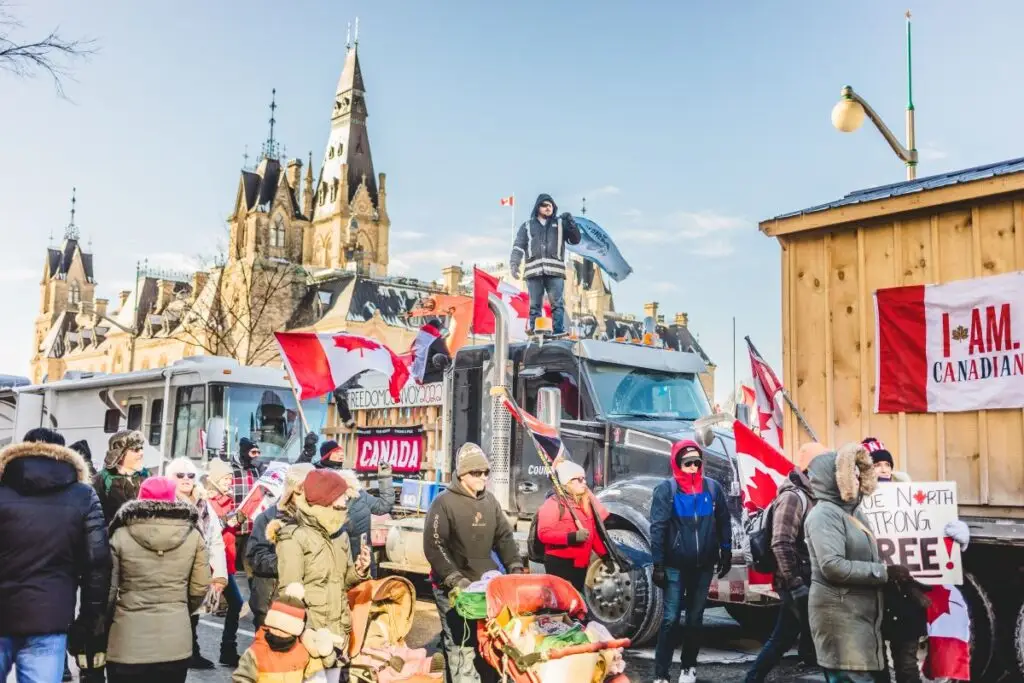
Professionalism in chaos
It is clear that the convoy protests put tow companies in a difficult position, and most did not want any part of it, regardless of whether they supported the protests or not. However, what happens when something that was legal becomes illegal? Tow Canada asked Bruce Campbell, who is on the board of directors for the Towing and Recovery Association of Alberta, for his perspective.
In this situation, lots of companies got threats. It was ruthless, especially once social media got involved. That was not called for. Some of it was just words and people talking. The public has no idea what we face or the challenges involved.
A lot of people have no idea how much it would take to move that type of equipment, or moving it if it were purposely disabled so it could not be moved, or if a tower was being hampered from moving it. This is not an average incident. If an owner has premeditated this (e.g. unhooked the battery cables, pulled the drive shaft, or chained the brakes together, etc.) the task escalates to a more difficult scenario.
If you have to deal with an owner who has done this, it would be best to communicate to them that you have been asked to move the vehicle, and that it is in their best interest to tell you what they have done, so we can see what we are up against and do the job safely and with the least amount of damage. Be professional about it.
When I first heard about the Emergencies Act, I thought, “WOW,” this is really going to put anyone that the authorities feel can help in a very uncomfortable position. However, if it comes down to it, if you had comply and you have no choice, being transparent would be the way to go. Send out a news blast or draft a letter to explain your position: “Please be respectful to the companies that have been required under Emergency Act and could not make a choice.”
Our industry has never seen anything like this before, and we are only getting a snapshot of what happened. The government officials and authorities in charge who maintained order, they were all in a very difficult position, and they did the best they could with the tools they had, no matter what the public thinks.
The point that I am most proud of is that these protests brought a truth to light. Towers are the most important people for keeping business, cars, and transportation moving on a daily basis.
In the end, we are the only private part of the public industry that isn’t guaranteed to be paid until after the fact. When we get called to an accident by authorities, you don’t know if they have coverage or insurance. We are there to open the road as fast as possible and get roadway back to pre-accident condition. On a main artery like the Trans-Canada and others, for every hour a main artery is blocked, it costs the business world and commerce millions.
The industry has demonstrated that our services are critical, but this work needs to be done in a professional manner.
Given the divisive nature of Covid-19, the Freedom Convoy, the protests, the blockades, the Emergency Act, and the aftermath, it is indeed a wonder that, in the ensuing chaos, towers found common ground. Authorities took industry concerns seriously enough to not push the issue, though it leaves some uncomfortable questions for the future, given we have not likely seen the end to protests in Canada.
1 Aldrich, J. (2022, February 3). “That’s $44 million per day’: Coutts border blockade hits Alberta economy and trade.” Calgary Herald. Retrieved April 4, 2022.
2 Bridge & Tunnel Operators Association. (2012, August 27). “Traffic Data.” Public Border Operators Association. Retrieved April 4, 2022.
3 DeClerq, K. (2022, March 21). “Ontario declares a state of emergency to end ‘siege’ in Ottawa and Windsor.” CTV News Toronto. Retrieved April 4, 2022.
4 Ibid.
5 Trudeau, J. (2022, February 14). “Full text of Justin Trudeau’s Emergencies Act announcement.” Toronto Star. Retrieved April 4, 2022.
6 Government of Canada. (2022, February 25) “Canada’s Emergencies Act.” Department of Justice. Retrieved April 4, 2022.
7 Baig, F. (2022, February 16). “Towing industry concerned for safety, business if told to help clear blockades under legislation.” Global News Canada. Retrieved April 4, 2022.
8 Kitts, D. (2022, February 17). “‘It’s not a grab and go’: Why tow-truckers don’t want to deal with the convoy.’” TVO Today. Retrieved April 4, 2022.
9 Hannay, C. (2022, February 15). “Ottawa will see pushback if tow trucks are forced to clear blockades, towing industry says.” The Globe and Mail. Retrieved April 4, 2022.
10 Reprinted with permission, Doug Nelson, executive director, Ontario Recovery Group (ORG). April 4, 2022.
11 Hannay, C. (2022, February 15). “Ottawa will see pushback if tow trucks are forced to clear blockades, towing industry says.” The Globe and Mail. Retrieved April 4, 2022.
12 Baig, F. (2022, February 16). “Towing industry concerned for safety, business if told to help under legislation.” Global News Edmonton. Retrieved April 4, 2022.
13 Ibid.
14 Ibid.
15 Krol, A. (2022, February 10). “Aucun remorqueur ne veut déplacer les poids lourds.” La Presse. Retrieved April 4, 2022.
16 As it Happens. (2022, February 16). “Tow truckers’ safety and bottom line at risk if forced to clear Ottawa blockade, says industry rep.” CBC Radio. Retrieved April 4, 2022.
17 Rodriguez, M. (2022, February 14). “Mounties arrest 13 ‘militant’ protesters after guns, body armour seized at Coutts blockade.” Calgary Herald. Retrieved April 4, 2022.
18 Williams, N. (2022, February 8). “Tow truck operator under attack after removing illegal shack at protesters’ request.” CBC News. Retrieved April 4, 2022.
19 Schick, L. (2022, February 8). “Regina tow companies hit with harassment after Sunday protest.” 650 CKOM (Saskatoon). Retrieved April 4, 2022.
20 Ibid.
21 As it Happens. (2022, February 16). “Tow truckers’ safety and bottom line at risk if forced to clear Ottawa blockade, says industry rep.” CBC Radio. Retrieved April 4, 2022.
22 Staff Reporter. (2022, February 18). “At least 100 arrested in police crackdown on Ottawa protest.” CBS News. Retrieved April 4, 2022.
23 Staff Reporter. (2022, February 21). “Trucker Protest: Day 24 — ‘Businesses should feel safe to reopen’, police say; 191 arrested.” Ottawa Citizen. Retrieved April 4, 2022.
24 Solicitor General. (2022, February 8). “Ontario Keeping Province Open for Business.” Government of Ontario. Retrieved April 4, 2022.
25 Government of Alberta. (2020, June 17). “Protecting critical infrastructure.” Alberta. Retrieved April 4, 2022.
